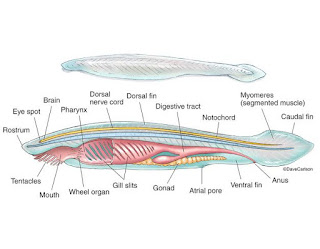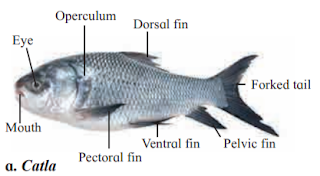Class 11 biology chapter 4 Kingdom Animalia textbook solutions
Maharashtra state board Biology Textbook Solutions for Class 11 are very important and crusial that helps the students in understanding the hard topics and helps them in the preparation of class 11 board examination as well as verious compititive entrance examinations also. Studying the answers to the questions in the Biology textbook will check your understanding of a particular topic and helps you determine your strengths and weaknesses.
Class 11 Biology textbook Solutions for Class 11, Biology Chapter 4 Kingdom Animalia maharashtra state board are provided here with simple step-by-step detailed explanations. These solutions for Kingdom Animalia are very popular among Class 11 students for biology chapter 4 Kingdom Animalia Solutions come handy for quickly completing your homework and preparing for compititive exams like NEET, CET abd verious medical entrance examination also. All questions and answers are taken from the class 11 Biology textbook, Bjology Textbook Solutions of Class 11 Biology Chapter 4 are provided here for you for without any charge its free for you. All Biology textbook Solutions for class 11. Solutions for class 11 Biology subject, These biology textbook solutions are prepared by experts in the field and are 100% accurate for you.
1. Choose correct option
A. Which of the following belongs to a minor phylum?
a. Comb jelly
b. Jelly fish
c. Herdmania
d. Salpa
B. Select the animal having venous heart.
a. Crocodile
b. Salamander
c. Rohu
d. Toad
C. In Ascaris, __________________.
a. mesoglea is present
b. endoderm is a discontinuous layer
c. mesoderm is present in patches
d. body cavity is absent
D. Which of the following is incorrect in
case of birds?
a. Presence of teeth
b. Presence of scales
c. Nucleated RBCs
d. Hollow bones
E. Chitinous exoskeleton is a characteristic
of ___________.
a. Dentalium
b. Antedon
c. Millipede
d. Sea urchin
2. Answer the following questions
A. Reptiles are known for having three
chambered heart. Which animal shows a
near four chambered condition in reptiles?
Answer : Most of the organisms belonging to the class Reptilia has a ‘three-chambered heart’. It consists of 2 atria and one half divided ventricle. The crocodile possesses four chambers of the heart.
B. The circulatory system has evolved from open to closed type in Animal kingdom. Which Phylum can be called first to represents closed circulation?
Answer : Answer: According to the phylum order in the animal kingdom, the phylum Annelida is the first to have a closed circulatory system. Explanation: Till the phylum Nematoda, they have an “open circulatory system where the exchange takes place through gaseous diffusion and the blood is filled in the hemocoel.
C. Pinna is part of external ear and it is found in mammals. Do aves and reptiles show external ear in any form?
Answer : Aves have no outer ear that is pinna, as it is hidden under their feathers. Reptiles have ears but the outer ear is absent or usually reduced in shape which just helps them to sensor things.
D. Fish and frog can respire in water. Can they respire through their skin? If yes, why do they have gills?
Answer : Answer:Frog can respire through its skin but fish can only respire through gills. Explanation:Tadpoles have gills to breathe but when they grow into frogs, they breathe through their skin in water and through their lungs in land. Their skin needs to be wet in order to breathe through skin.
E. Birds need to keep their body light to help in flying. Hence, they show presence of some organs only on one side. How their skeleton helps in reducing their weight?
Answer : As being hollow allows the birds to be light in weight and fly easily in the sky. Their shape of bone also helps in providing strength to the skeletal system of birds.
F. Cnidarians and Ctenophorans are both diploblastic. Which other character do they have in common, which is not found in other Phyla?
Answer : The other character which Cnidarians and Ctenophorans have in common is that both of these phyla exhibits radial symmetry. When the body of an organism gets divided into two halves which are identical to one another by a plane which passes through their centre, then this type of symmetry is known as Radial Symmetry.
G. Crab and Snail both have a protective
covering. Is it made up of the same
material?
Answer : Crab composed of iron sulphide in the outer layer while snail’s outer wall is made of calcium carbonate. This calcium carbonate will dissolve and the snail let as bare body in water
H. Sponge and sea star show calcareous
protective material. Do they belong to the same Phylum?
Answer : :Sponge and sea star show calcareous protective material but sponges belong to porifera and sea star( star fish) belong to phylum echinodermata.
I. Fish and snake both have scales. How do these scales differ from each other?
Answer : Answer: The Fish scales and the snake scales are not similar because the fish scales arise form bony tissue of the embryo whereas the snake scales arises from the epidermis of the skin. Explanation: The fish and the reptile scale have a different set of genes that are expressed on them.
J. Lower Phyla like Arthropods and
Cnidarians show metamorphosis. Is it also found in any class of Phylum Chordata?
Answer : Just like lower Phyla Arthropods and Cnidarians show metamorphosis it is found in classes of Phylum Chordate. It is observed in Urochordates and Cephalochordates which belong to Deuterosome Phylum. It is seen in their post-embryonic stage of life. The kind of metamorphosis that is seen is called Homologous metamorphosis. Chordata is a Phylum that has organisms like amphibians, birds, fishes, mammals etc. For example, frog goes through metamorphosis during its development.
3. Draw neat labelled diagram
A. Sycon
B. Aurelia
C. Amphioxus
D. Catla
F. Scolidon
4. Match the following
Phylum. Characters
i. Annelida. a. Tube feet
ii. Mollusca. b. Ostia
iii. Ctenophora. c. Radula
iv. Porifera. d. Parapodia
v. Echinodermata. e. Comb plates
Answer:
i. Annelida – Parapodia.
ii. Mollusca – Radula.
iii. Ctenophora – Comb plates.
iv. Porifera – Ostia.
v. Echinodermata – Tube feet.





